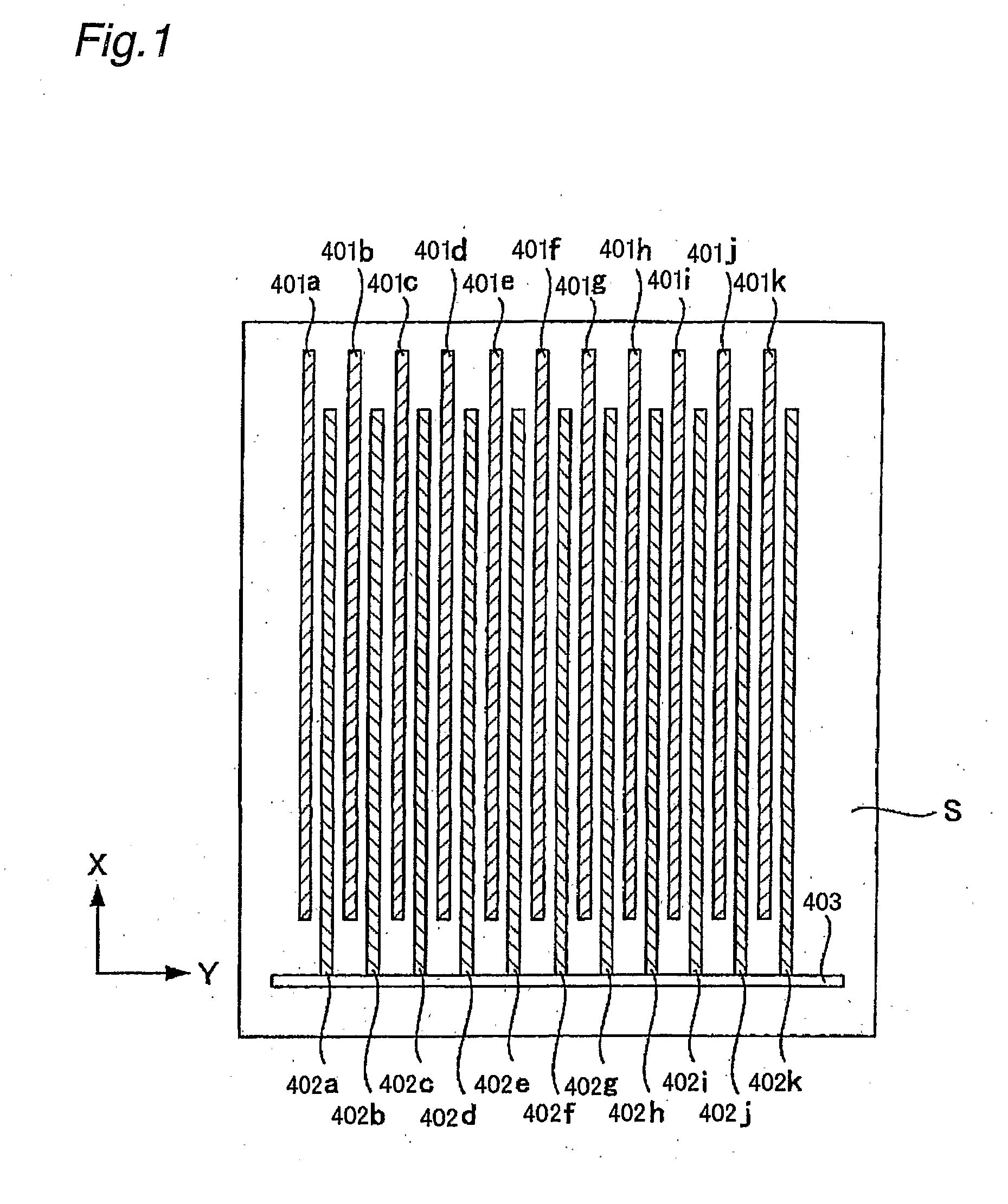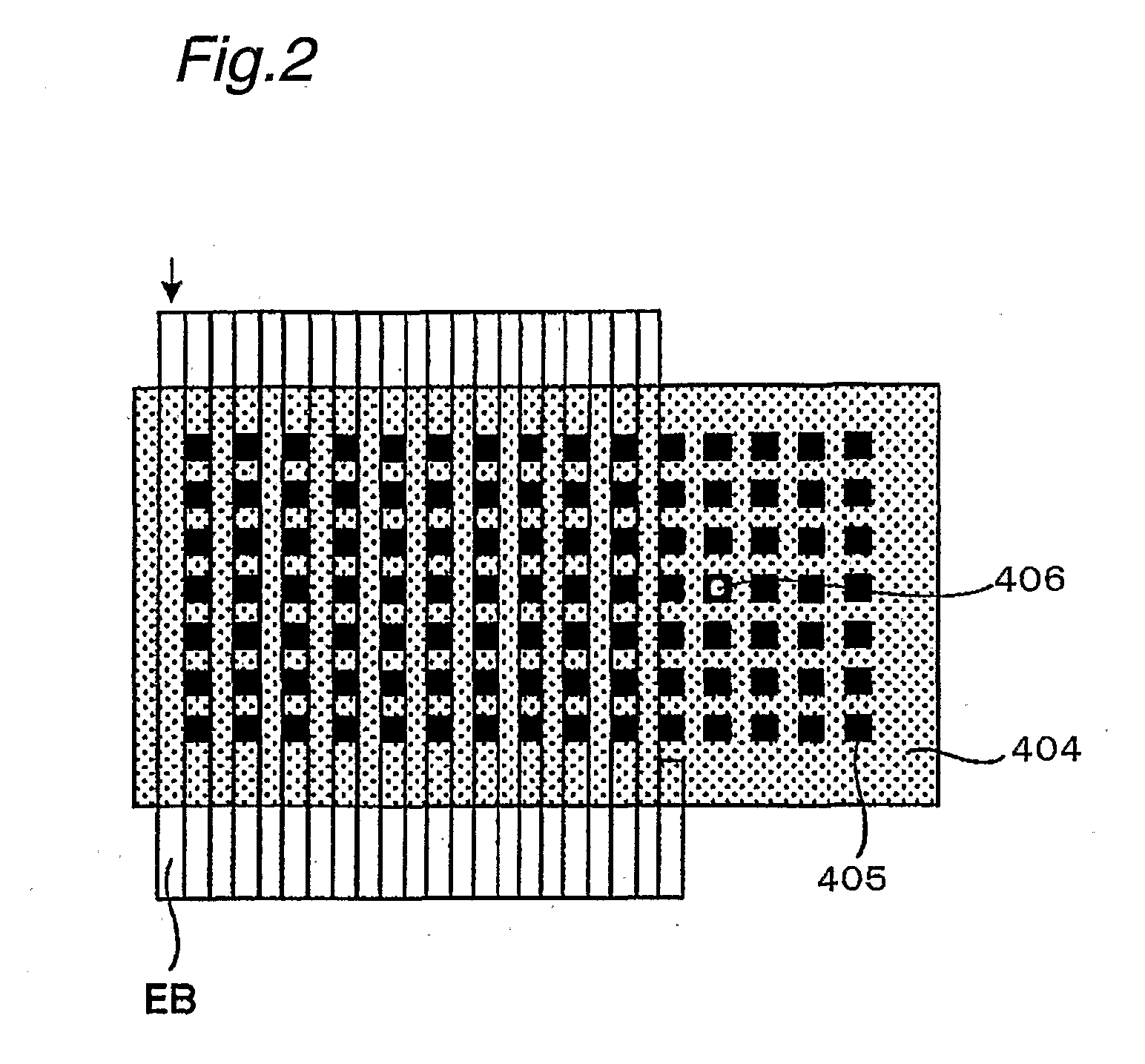Semiconductor devices and method of testing same
a technology of semiconductor devices and semiconductors, applied in the direction of individual semiconductor device testing, semiconductor/solid-state device testing/measurement, instruments, etc., can solve the problems of electric failure detection at a speed which is increasingly lower, the detection resolution cannot but be increasingly smaller, and the size of the semiconductor devi
- Summary
- Abstract
- Description
- Claims
- Application Information
AI Technical Summary
Benefits of technology
Problems solved by technology
Method used
Image
Examples
first embodiment
[0188]FIG. 4 illustrates a semiconductor device according to the present invention. In FIG. 4, a semiconductor device S has a semiconductor structure which comprises multiple basic structures, each including a via chain for connecting an upper layer wire and a lower layer wire through a via, which are two-dimensionally arranged on a periodic basis. Specifically, the basic structure of the semiconductor device S includes the following components, and FIG. 4 illustrates two basic structures:
[0189](1) a first row wire which has a plurality of wires 1, 2, 3 arranged at predetermined intervals in a row direction (in a left-to-right direction in FIG. 1) in a first layer;
[0190](2) wires 4, 5 formed in a lower layer at positions at which they can connect adjacent ends of the wires 1, 2, 3 in the first layer;
[0191](3) a second row wire which has a plurality of wires 6, 7, 8 arranged at predetermined intervals in the row direction, disposed in the first layer in parallel with the first row wi...
second embodiment
[0207]Since the second embodiment has the structure as described above, a broken point b, if occurring on the row wire 21 which should be essentially at the ground potential, will cause the right side from the broken point b, i.e., wires connected to the conductor 23 to transition to an open potential (floating potential). Therefore, when the conductors 26 are scanned using an electron beam EB, the conductors at the ground potential differ in the secondary electron emission amount from the conductors at the open potential. By taking advantage of this phenomenon, it is possible to detect the presence or absence of a line break on a row wire which should be essentially at the ground potential. Likewise, in this embodiment, since the conductors are formed on every other row wires at first and second ends, respectively, these conductors are arranged at a wiring pitch reduced to one-half of the row wires. Accordingly, since the width in the column direction is two times wider, they can b...
third embodiment
[0211]FIGS. 7(A) and 7(B) are diagrams generally illustrating a semiconductor device according to the present invention for effectively detecting a location at which a short has occurred, as described above. FIG. 7(A) is a diagram illustrating a mutual positional relationship among components which make up a basic structure of a semiconductor device S, and FIG. 7(B) illustrates a cross-sectional view taken along a line B-B in FIG. 7(A). The semiconductor device S according to this embodiment employs the illustrated structure as a basic structure, and has a semiconductor structure which comprises a large number of the basic structures which are two-dimensionally arranged on a periodic basis.
[0212]As illustrated, the basic structure of the semiconductor device comprises the following components:
[0213](1) a first pair of gate electrodes 42, 43 elongated in the row direction, and formed on a thick SiO2 substrate (STI (Shallow Trench Isolation)) 41 through a gate insulating film 32;
[0214...
PUM
 Login to View More
Login to View More Abstract
Description
Claims
Application Information
 Login to View More
Login to View More - R&D
- Intellectual Property
- Life Sciences
- Materials
- Tech Scout
- Unparalleled Data Quality
- Higher Quality Content
- 60% Fewer Hallucinations
Browse by: Latest US Patents, China's latest patents, Technical Efficacy Thesaurus, Application Domain, Technology Topic, Popular Technical Reports.
© 2025 PatSnap. All rights reserved.Legal|Privacy policy|Modern Slavery Act Transparency Statement|Sitemap|About US| Contact US: help@patsnap.com



